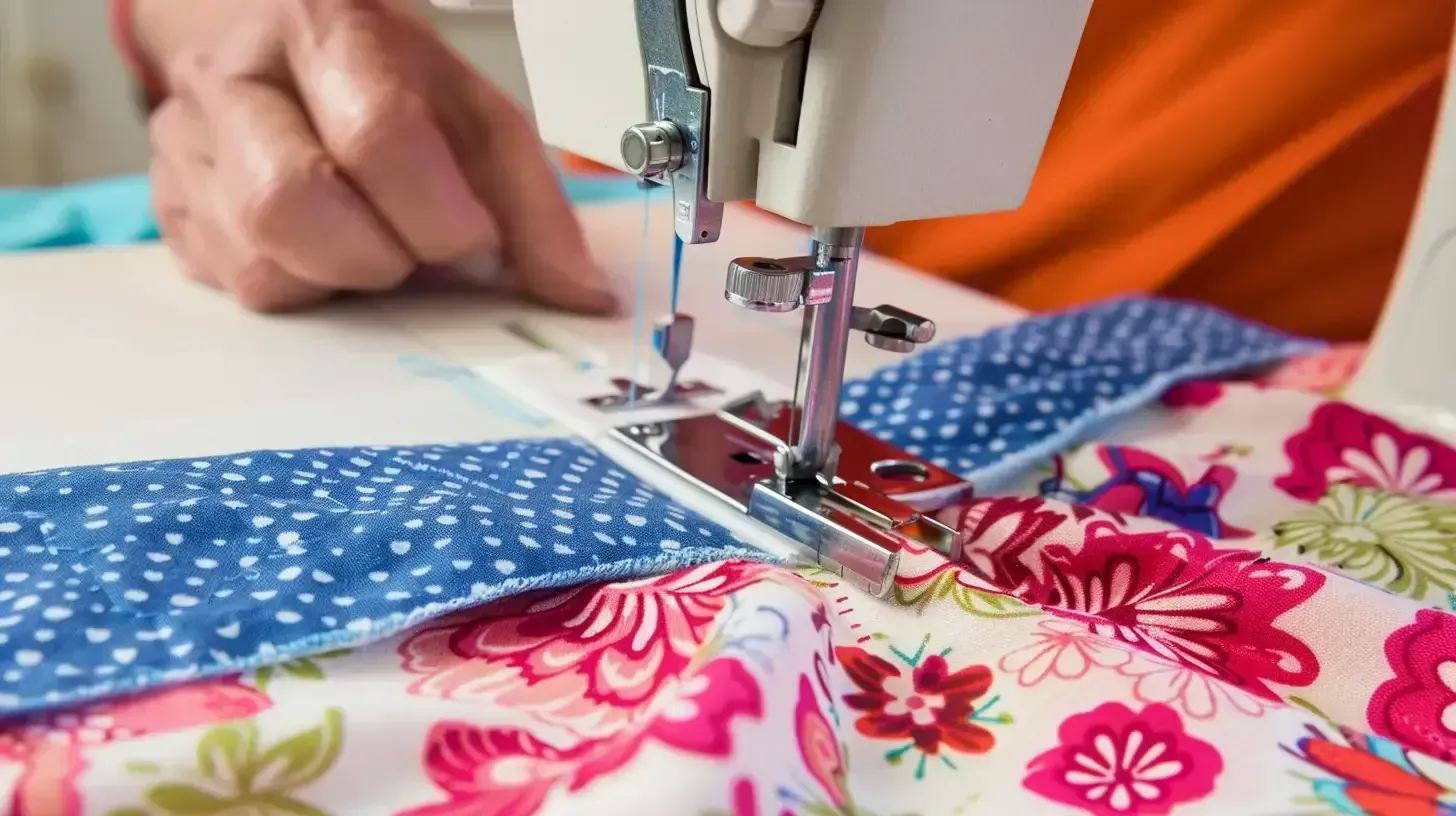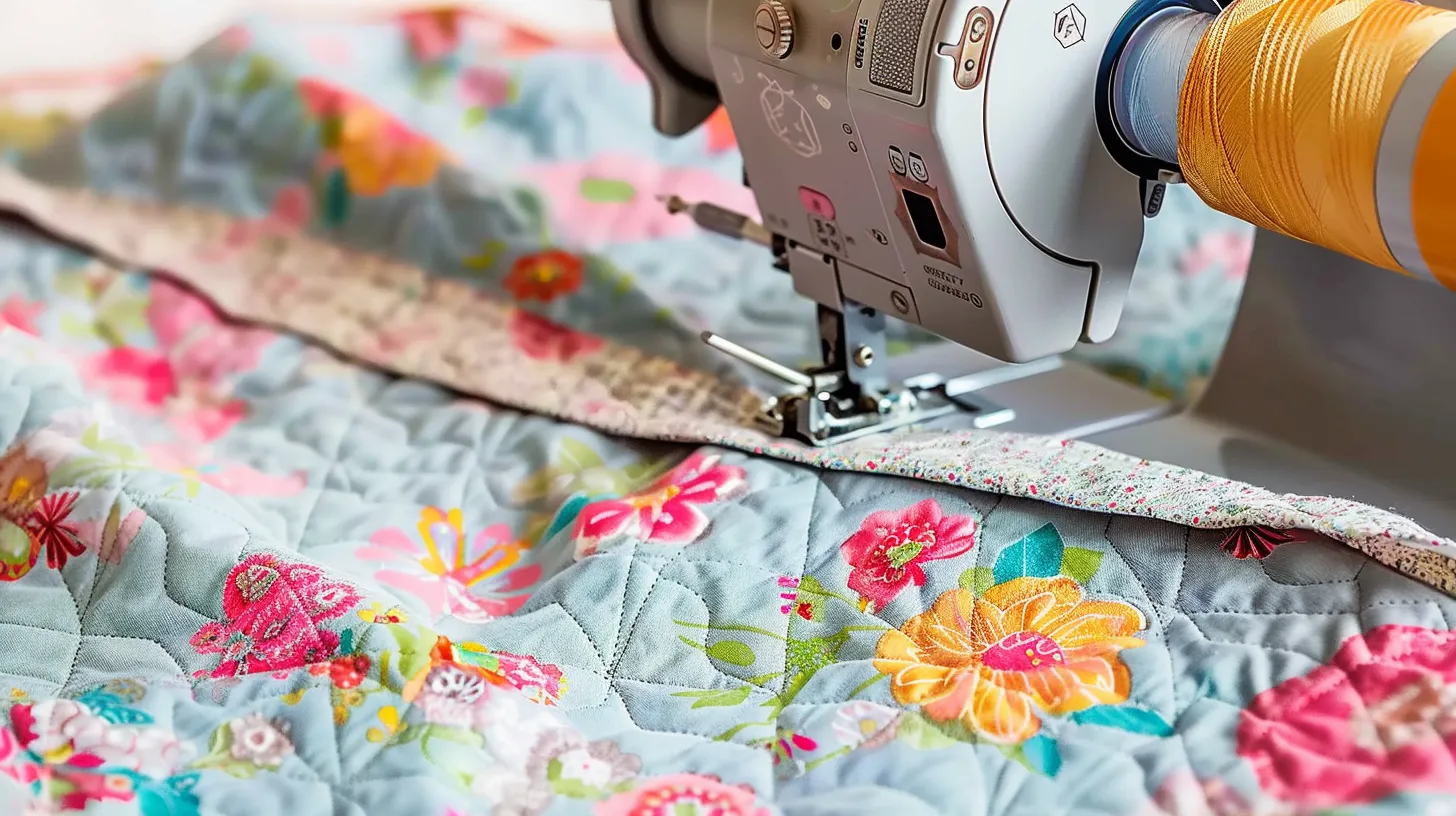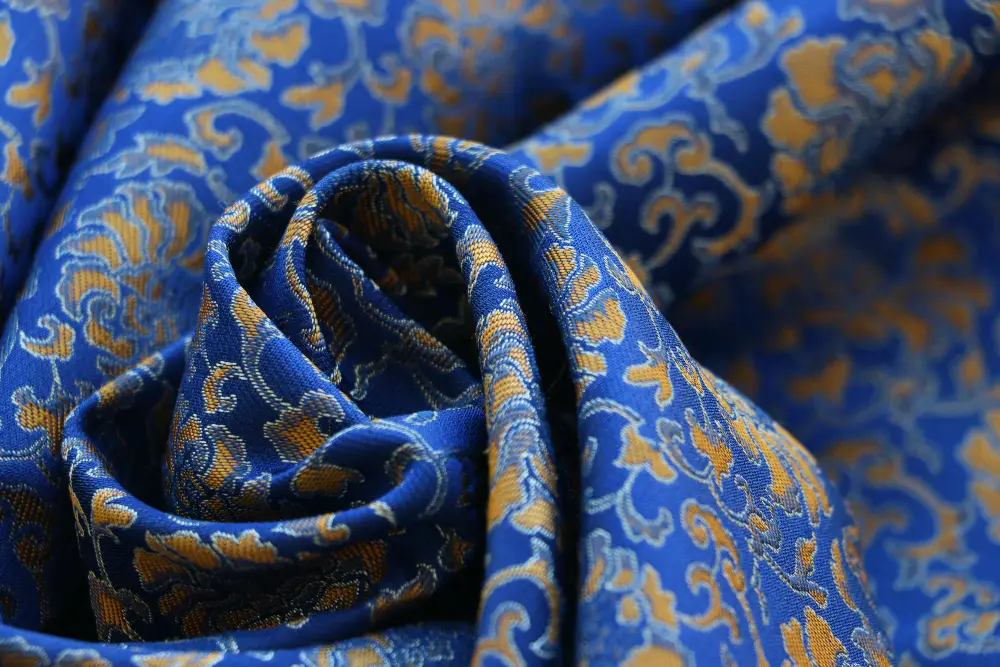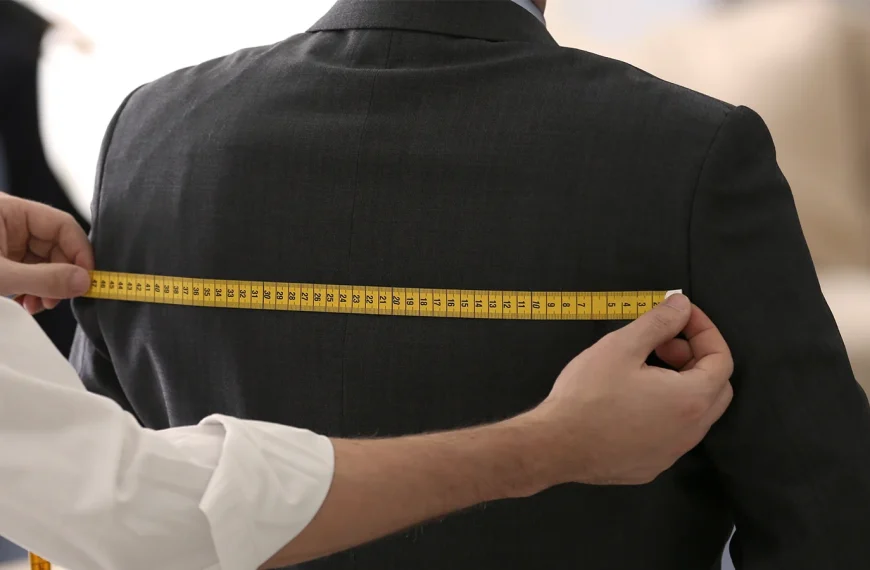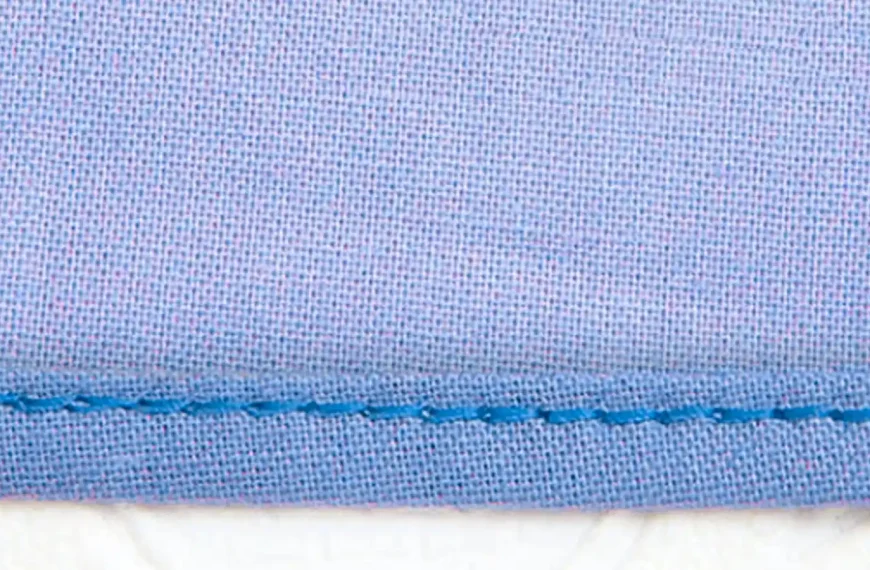Are you struggling to find the perfect tension setting for sewing cotton fabrics on your machine? You’re not alone. Many sewers, from beginners to seasoned pros, run into this issue.
This blog post will help you understand and adjust your sewing machine’s tension for different types of cotton fabrics. We’ll cover what factors influence tension, recommended settings for various cotton projects, and how to troubleshoot common problems.
With these tips, achieving flawless stitches will be easier than ever before.
Get ready—smoother stitching awaits!
Key Takeaways
- Cotton fabric works best with a sewing machine tension setting between 4 and 5. This range ensures smooth, even stitches without damaging the fabric.
- For lightweight cotton fabrics, lower your tension to prevent puckering. For secure seams, use a stitch length of 2 to 2.5mm.
- When sewing thick cotton materials, increase the upper thread tension slightly. Use larger needles to create solid, flat seams.
- For optimal results, use high-quality cotton thread that matches your fabric weight. This helps avoid breakage and ensures balanced tension throughout your project.
- Before sewing on your main project, test the adjusted tension settings on a scrap of the same fabric to ensure perfect stitches every time.
Understanding the Importance of Sewing Machine Tension

Now, let’s shift our attention to sewing machine tension. This aspect is crucial because it affects how your stitches form on the fabric.
Proper tension ensures that the top and bobbin threads interlock snugly in the middle of the fabric, creating smooth, even stitches. If the tension is off, you might see loops under your fabric or feel that the stitches are too tight or loose.
Adjusting your sewing machine’s tension can appear tricky at first glance. But it’s essential for achieving professional-looking results. Adjusting the tension settings between 4 and 5 when sewing with cotton fabrics can make all the difference due to their stability and ease under a sewing machine needle.
This balance allows you to work with varying weights of cotton without worrying about puckered seams or broken threads.
Factors Influencing Tension for Cotton Fabric
Many factors influence the tension when sewing cotton fabrics. These factors are crucial to determining the ideal tension settings for achieving high-quality stitches.
- Fabric Weight and Thickness: They greatly influence the tension settings on your sewing machine.
- Thread Type and Weight: Thread type plays a crucial role in achieving the perfect tension for sewing cotton fabrics.
- Sewing Machine Type: Different brands and models of sewing machines might need unique tension settings to achieve the perfect stitch.
Ideal Tension Settings for Different Fabrics

A lower tension setting is ideal for lightweight fabrics. On the other hand, a higher tension setting is suitable for thick fabrics. Additionally, it’s advisable to use less tension for stretchy fabrics.
Lightweight Fabrics (Lawn, Cotton Voile, Etc.)
When sewing lightweight fabrics such as lawn or cotton voile, set the tension dial between 3 and 4. This ensures a balanced stitch formation without causing puckering or pulling on the delicate fabric.
Use a fine cotton thread for topstitching. Aim for a moderate stitch length of 2 to 2.5mm to create secure seams that won’t overpower the lightweight fabric.
Thick Fabrics (Leather, Denim, etc.)
Sewing thick fabrics like denim and leather requires a higher tension setting, typically between 3.5 and 4.5. Also, using larger needles is important for the best results.
The ideal tension may vary based on the specific fabric and your sewing machine brand. So, be sure to test different settings to achieve the perfect balance.
Stretchy Fabric (Chiffon, Terrycloth, Etc.)
For stretchy fabrics like lycra or elastane, a tension level of 2–3 is ideal for the best results. These delicate materials need caution when adjusting the tension settings. Because they can easily get distorted if the tension is too tight.
Focus on Cotton: What Tension Should Be Used?

A tension setting between 4 and 5 is generally suitable when sewing cotton fabric. This ensures that the top and bottom threads are balanced, creating even and secure stitches. It’s also important to match the tension with the fabric weight. Lighter cotton may need slightly lower tension, while heavier cotton may need more tension for optimal results.
For stitch width and length, use a wider stitch (between 3 and 4) for extra heavy-weight cotton. On the other hand, lightweight cotton is best with a narrower stitch (between 1.5 and 2). Additionally, opt for a standard stitch length of 2 to 2.5mm for a medium-weight cotton fabric.
To achieve perfect stitching when working with 100% cotton or its blends, adjust your machine’s upper tension to 4. Ensure you use the appropriate needle size (90/14) and 100% cotton or cotton blend thread that matches the fabric content.
How to Troubleshoot Sewing Machine Tension Problems?
Keep reading for more tips on troubleshooting tension issues and enhancing your sewing experience with cotton fabrics.
Getting a New Needle
Replace or repair needles at the first sign of wear to prevent tension issues. A dull or damaged needle can cause skipped stitches and uneven tension, impacting the stitch quality.
Double-Checking the Thread
Double-check the thread to ensure proper threading through the machine when experiencing tension issues. Ensure that you place the top thread correctly in the tension disks and that it securely passes through all threading points without any tangles or snags.
Furthermore, confirm that the bobbin thread is inserted in the bobbin case facing the correct direction according to your sewing machine’s instructions. Double-checking these details can help prevent potential tension problems while sewing with cotton fabrics.
Matching the Top and Bobbin Thread
When sewing with cotton fabric, it’s crucial to match the top and bobbin thread. Ensuring that both threads have similar weight and material helps maintain balanced tension.
This simple step can prevent issues like thread breakage, loops on the underside fabric, and other tension-related problems, providing a hassle-free sewing experience. So, take a moment to check your thread choices before starting your next cotton project.
Cleaning Your Sewing Machine (Oil If Necessary)
Regular cleaning and lubrication of your sewing machine is essential for its upkeep, especially if you sew frequently or work with fabrics that shed. This maintenance practice can help prevent tension issues and ensure smooth stitching.
Tension Recommendations for Different Cotton Sewing Projects
Achieve the ideal tension for different cotton sewing projects. The right tension ensures neat and balanced stitches, especially for garment construction, quilting, and home decor sewing.
Garment Construction
When sewing cotton for garment construction, choose the right tension setting to achieve professional and polished results. For lightweight cotton fabrics, a lower tension setting works best to prevent puckering and distortion.
On the other hand, thicker cotton fabrics need a higher tension setting. When working with stretchy cotton fabrics, adjusting the tension slightly looser can accommodate the fabric’s elasticity.
Quilting
For quilting with cotton fabric, set the tension between 4 and 5 for optimal results. Ensure that your stitch length is suited to the fabric weight, with medium-weight cotton typically requiring a standard stitch length of 2 to 2.5mm.
Using this technique, you can make breathable and comfortable quilts perfect for various projects.
Home Decor Sewing
When moving from quilting to home decor sewing, consider the specific requirements for different types of cotton fabrics. For home decor projects like quilts, blankets, and curtains, the tension setting on a sewing machine typically falls between 4 and 5.
This range ensures stable stitching without slippage during fabric feed, making cotton an ideal choice for such projects. Home decor sewing often involves various types of cotton fabric with differing weights and thicknesses. Hence, adjusting the tension settings accordingly is crucial for the best results.
Conclusion
Achieving the correct tension when sewing cotton fabric is crucial to producing high-quality stitches and professional-looking results. Sewers need to understand the factors that influence tension settings and adjust their machines’ tension effectively. Regularly testing and fine-tuning tension settings, along with troubleshooting common issues, can lead to smoother sewing experiences and improved sewing outcomes when working with cotton.
Remember, practice and experimentation are key to mastering tension for sewing cotton fabric.
Learn more about fabric knowledge in Longan Craft Blog, and dive into the fabric world with Longancraft!
FAQs
1. Why is my thread too loose when I sew with cotton?
If your thread is excessively loose, it could be due to an incorrectly set top tension or an incorrectly threaded thread path. Try tightening the tension a bit and re-threading your machine.
2. Can I use polyester thread for sewing cotton fabrics?
Yes, you can use polyester thread to sew cotton fabrics, as it’s solid and durable. Just make sure to adjust your machine’s tension settings accordingly to prevent puckering.
3. How do I know if my sewing machine’s tension is correct for cotton?
You’ll know the tension is correct when the stitches are even on both sides of the fabric without any loops or tightness pulling at the seams. A straight stitch should look neat and flat along the fabric.
4. Should I change my needle when sewing different weights of cotton fabric?
Yes, changing your needle based on the weight of your cotton fabric ensures better stitching quality. To avoid damaging the fabric, use a finer needle for lightweight cotton and a larger one for heavier textiles.
5. What do I do if adjusting top tension doesn’t fix stitching problems on cotton?
If adjusting only top or bottom tensions doesn’t solve stitching issues, check that you use compatible needle and thread sizes for your fabric type. Also, ensure no tangles are in either the upper or lower thread paths. If problems persist, consider servicing your machine to check internal settings like presser foot pressure or bobbin case issues.

